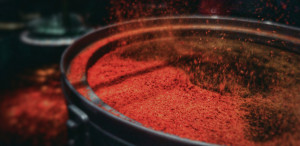Peer Assessment
What is it?
Peer Assessment is an instructional strategy that has students providing each other feedback on the quality of their work according to criteria that is set by the instructor. Overall, students analyze the work completed by their peers, while simultaneously receiving feedback from fellow students. Peer assessment in the classroom provides students with the opportunity to experience the peer review process both in terms of reviewing and being reviewed.
Purpose: By assessing the work of their peers, students develop their assessment and critical analysis capabilities. Students also learn to provide, accept, interpret and apply feedback from their others.
Skills Promoted
- Analysis
- Assessment skills
- Collaboration skills
- Critical thinking
- Communication
- Evaluative reasoning
Who's using it?
SALTISE community members who use this strategy and are willing to share advice and/or resources.
| Institution | Discipline | Instructor | Classroom settings |
|---|---|---|---|
|
McGill University Level: University |
Engineering |
Traditional Classroom Classroom size: 400 (200/section) |
|
|
McGill University Level: University |
Chemistry |
Active or traditional Classroom size: |
|
|
John Abbott College Level: College |
Physics |
Active or traditional Classroom size: 30-40 |
|
|
University of British Columbia Level: University |
Chemistry |
Jaclyn Stewart |
Active or traditional Classroom size: |
| Institution |
McGill University Level: University |
McGill University Level: University |
John Abbott College Level: College |
University of British Columbia Level: University |
|---|---|---|---|---|
| Discipline |
Engineering |
Chemistry |
Physics |
Chemistry |
| Instructor |
Jaclyn Stewart |
|||
| Classroom settings |
Traditional Classroom Classroom size: 400 (200/section) |
Active or traditional Classroom size: |
Active or traditional Classroom size: 30-40 |
Active or traditional Classroom size: |
Why use it?
Firstly, students receive feedback from other students and the opportunity to see what other students think about the same problem. This broadens the students thinking. Furthermore, students learn how to accept, interpret and incorporate feedback from their peers. Simultaneously, they learn to provide constructive feedback to others (e.g., instead of simply saying something is “bad”, they will realize that it is important to stress why something is not clear and ways in which it can be improved). Learning how to frame constructive feedback is an important skill students have the opportunity to explore in this strategy
(Lawrence Chen, McGIll University).
Some students feel an instructor or teaching assistant should grade all their work and suspect that their peers may harshly grade them in the aim of boosting their own grades. However, the proportion of students expressing this view in the very large classes where I have used the strategy is minimal (in large 400 student classes, I have had no more than 5 complaints). Such students are generally reassured by the fact that I only attribute 30% of the final grade for any peer assessment-based activity to the actual document written by the students. They realize that what I am really grading is student critical analysis skills. Students often think that instructor knows best or that an instructor is always consistent with his or her grading. This is not the case. I use this strategy for questions where there are no right or wrong answers (i.e., subjective questions). For such questions, even an instructor’s grade could fluctuate.
(Lawrence Chen, McGIll University)
Ready to try it out?
STEP 1: Instructor assigns students, individually or in groups, to review the work produced by peers using a rubric or template (model) – can be written piece (essay, review, lab report, etc.), problem solving, graphical (data sheets, concept maps, etc.) or illustrations (drawings, photographs, etc.).
OPTION: rubric or template can be (1) provided by the instructor; or (2) generated by students in separate activity.
STEP 2: Individually or in small groups, students review another individual’s or group’s work using a rubric or template.
STEP 3: Individually or in small groups, students provide peers with feedback – in writing or prepared for oral presentation.
STEP 4: Individually or in small groups, students review feedback and decide how to make changes.
BEST PRACTICES:
Feedback should include the following:
- Location of error or improvement required;
- Description of error or improvement required;
- Action for correction or improvement.
Helpful resources
Tech Tools
References
Linton, D. L., Farmer, J. K. and Peterson, E. (2014). Is peer interaction necessary for optimal active learning?. CBE-Life Sciences Education.
Nilson, L. B. (2003). Improving student peer feedback. College Teaching.
Topping, K. (1998). Peer assessment between students in colleges and universities. Review of Educational Research.
Falchikov, N. and Goldfinch, J. (2000). Student peer assessment in higher education: A meta-analysis comparing peer and teacher marks. Review of Educational Research.
Hanrahan, S. J. and Isaacs, G. (2001). Assessing self-and peer-assessment: The students’ views. Higher Education Research, Taylor & Francis..
Sluijsmans, D., Dochy, F. and Moerkerke, G. (1998). Creating a learning environment by using self-, peer- and co-assessment. Learning Environments Research.
Video
Facilitating peer and self-assessment – Loughborough University and University of Hull.
SALTISE Event Materials
Webinar Recording & Presentation Slides: “Empowering student learning: Ways to leverage the power of peer assessment” on January 29, 2021
TO LEARN MORE
For more resources go to Articles and Books

















